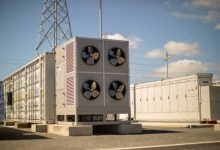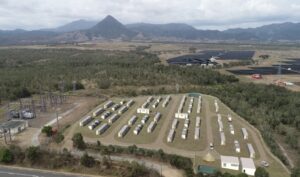Australia energy transition is poised to make another important leap as battery manufacturers and battery project developers eye an unique opportunity to use battery technology to upgrade grid capacity rather than traditional infrastructure such as poles and wires or bigger substations.
The Victoria government’s move to side-step Australia’s restrictive energy regulatory regime and fast-track what it sees as a much needed grid upgrade will present – for the first time – an equal opportunity for big battery project and an example of “virtual transmission.”
Victoria has decided to call for expressions of interest to increase the capacity of the Victoria-New South Wales interconnector, one of a number of measures deemed necessary to boost its resources, and to unlock more renewable energy capacity currently strangled by grid bottlenecks.
The EOI will be conducted by the Australian Energy Market Operator, which is also frustrated by the slow pace of regulatory approvals for much needed infrastructure.
On Wednesday in Melbourne it held an information session attended by around 40 people, some of them representing battery interests, and it revealed it was looking for “fast response” in the form of a System Integrity Protection Scheme (SIPS), a role that has been played by the Hornsdale Power Reserve battery in South Australia.
Batteries have already been deployed to store the output of wind and solar farms, provide important frequency and ancillary services to the grid, and to create micro grids that will enable local communities to have power while the network is down elsewhere.
In remote, off-grid areas, they have played an important role in removing the need for gas or diesel generators to have more gas or diesel generators constantly running as back-up, reducing costs dramatically and increasing reliability.
Batteries also have important capabilities to help upgrade transmission links. A recent proposal considered by Transgrid for the upgrade of the NSW-Queensland interconnector had a big battery option falling just short.
See: Battery storage nearly there as smarter, cheaper choice for grid upgrades
But that analysis was done internally, by a company that has never done much apart from building poles and wires. The EOI conducted by AEMO on behalf of the Victoria government will be the first time that batteries can compete in an open tender, and there is every expectation that batteries will do very well.
If they do, and it is built, it will likely pave a new path to rethinking the way infrastructure is built or expanded across the grid.
The legislation for this initiative has not yet made its way through both houses of the Victoria parliament, but AEMO has been asked to call for expressions of interest in the meantime.
The formal EOI document will be released on Monday, March 2, and will include a request for the provision of a System Integrity Protection Scheme (SIPS)service capable of enabling an additional import capacity of up to 250MW on the existing Victoria – New South Wales interconnector.
Responses to the call are due on Monday, March 16.
“The call for EOIs will take a technology-neutral approach in order to understand the various options that are available to provide this SIPS service, as well as what if any additional services or market benefits various options could provide,” AEMO said in a letter to stakeholders. But if it is really looking for fast response, then there is probably only one solution.
Listen to our recent episode of RenewEconomy’s Energy Insiders podcast and our interview with Victoria energy minister Lily D’Ambrosio.








